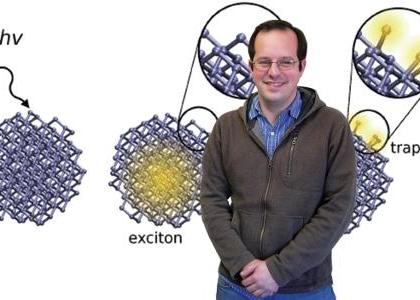Nonradiative Recombination

The Levine group applies iCER’s high-performance computer resources to identify the mechanism of one process that limits the efficiency of solar cells: nonradiative recombination. It is their hope that by elucidating the mechanism of this process they can inform the design of future generations of materials with desirable properties for solar energy harvesting and other applications.
When a material absorbs light, electrons in the material become excited. In the course of its motions, an excited electron interacts with the nuclei of the atoms in the material. Under some circumstances, the energy in the excited electron can be transferred to the nuclei. That is, the electrical energy that could have been used to power an electric device or drive a chemical reaction has been lost as heat. This process is nonradiative recombination, and in the context of a solar cell it results in a loss of efficiency. The details of the “dance” performed by the electrons and nuclei in such a material are complex and very difficult to measure experimentally.
Computer simulations allow researchers to observe the microscopic atom-by-atom, electron-by-electron dynamics of this process in a way that is not possible in the laboratory, and thus can shed light on how future generations of materials should be designed.
Through the use of graphics processing units (GPUs), fast processors designed to accelerate graphical applications, they hope to significantly expand the size and complexity of photochemical systems that can be practically studied. As individual GPUs offer the performance of a small cluster of traditional CPUs, ICER’s GPU cluster offers Levine the opportunity to ask the question: “what would we do if we had a cluster of clusters?” The answer is to run multiple coupled simulations of nonradiative processes in materials, with the hope of fully exploring their possible decay mechanisms.
